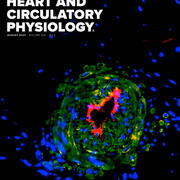Abstract
Smoking and high-fat diet (HFD) consumption are two modifiable risk factors for cardiovascular (CV) diseases, and individuals who are overweight or obese due to unhealthy diet are more likely to use tobacco products. In this study, we aim to investigate the combined effects of nicotine (the addictive component of all tobacco products) and HFD on CV health, which are poorly understood. C57BL/6N male mice were placed on either HFD (60 kcal% fat) or regular diet (22 kcal% fat) and exposed to air or nicotine vapor for 10–12 wk. CV function was monitored by echocardiography and radiotelemetry, with left ventricular (LV) catheterization and aortic ring vasoreactivity assays performed at end point. Mice on HFD exhibited increased heart rate and impaired parasympathetic tone, whereas nicotine exposure increased sympathetic vascular tone as evidenced by increased blood pressure (BP) response to ganglionic blockade. Although neither nicotine nor HFD alone or in combination significantly altered BP, nicotine exposure disrupted circadian BP regulation with reduced BP dipping. LV catheterization revealed that combined exposure to nicotine and HFD led to LV diastolic dysfunction with increased LV end-diastolic pressure (LVEDP). Moreover, combined exposure resulted in increased inhibitory phosphorylation of endothelial nitric oxide synthase and greater impairment of endothelium-dependent vasodilation. Finally, a small cohort of C57BL/6N females with combined exposure exhibited similar increases in LVEDP, indicating that both sexes are susceptible to the combined effect of nicotine and HFD. In summary, combined exposure to nicotine and HFD leads to greater CV harm, including both additive and new-onset CV dysfunction.

